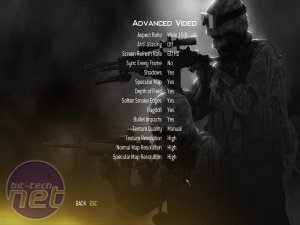Video Playback
We tested the VIA system with a range of 1080p H.264 content using the popular VLC, Media Player Classic - Home Cinema edition and PowerDVD 10 software, with video acceleration enabled. VIA claims 1080p media is wholly doable on this platform and we must point out that VIA itself only recommended Cyberlink's PowerDVD 9 or 10 as optimal for its GPU acceleration, but we still wanted to test the free software. Unsurprisingly given the combination of, well, 'niche' VIA hardware and the alpha status of VLC's GPU acceleration, we found the latest version (1.1.4) would not support it at all, and without GPU acceleration the CPUs did not have enough horsepower for smooth video playback.
Unsurprisingly given the combination of, well, 'niche' VIA hardware and the alpha status of VLC's GPU acceleration, we found the latest version (1.1.4) would not support it at all, and without GPU acceleration the CPUs did not have enough horsepower for smooth video playback.MPC-HC was better, as with GPU acceleration enabled it worked without corruption. However, there was still very high CPU loading on all 1080p content played which makes us conclude the GPU acceleration either wasn't working properly (unoptimised) or not at all.
Finally we tried PowerDVD 10 and found that some 1080p content did indeed play smoothly with GPU acceleration enabled, however our higher bit-rate samples specifically (including our 'killer sample' test which involves a panning and zooming out of thousands of birds in flight) would still not play smoothly.
We think the hardware has the power to play high-quality HD video smoothly, and indeed some 1080p H.264 content did play, but it requires some significant driver work for this to work better. It's also worth noting that all the 720p content we tried played perfectly.
Out of interest, we dropped in a GeForce GTX 460 1GB into the PCI-Express 4x slot to check if the video playback was an IGP video acceleration limitation, or whether the CPU was the limiting factor. The GTX 460 is a total overkill for just video, but its PureVideo HD hardware is the same throughout the Fermi line. We found all our clips played flawlessly - the CPU averaged about 20-30 per cent load in every H.264 1080p clip with the occasional peak of 60-80 per cent. Evidently the VN1000 IGP drivers still need some work then.
Light Gaming
Minecraft
Best Playable Settings:- Render Distance: Normal
- Graphics: Fancy
The CPU usage of both cores was consistently about 80 per cent but peaked at 100 occasionally.
Compared to the Intel 'CULV' GMA 4500MHD graphics, the performance was hugely better on the VIA hardware. Even at the very minimum settings the Intel graphics cannot reach anything near a smooth, playable frame rate.
The game requires dual-core hardware to not lag, so the other platforms were also deemed not suitable.
Call of Duty: Modern Warfare 2
Best Playable Settings:- Resolution: 1,280 x 720
- Graphics Detail: Highest
- Anti-aliasing: None
Team Fortress 2
Best Playable Settings:- Resolution: 1,280 x 720
- Graphics Detail: High
- Anisotropic Filtering: Trilinear
- Anti-aliasing: None
- Reflections: Simple
- Multicore Rendering: Enabled
After testing, VIA provided us with a set of updated IGP drivers which fixed our graphics glitching issues in Team Fortress 2 and Modern Warfare 2, but also dropped the performance down a notch and even removed several resolution options. There was also still no improvement in game performance with Aero enabled, which is a shame.
As far as Minecraft goes, well, the driver update killed the game. Despite showing the title screen it now wouldn't actually render anything.
VIA was quick to remind us that this platform is still six months away from launch, which is fair enough. However, we'd also like to retort that its VN1000 was announced last December. Adding another CPU simply shouldn't require that much stress to the driver model.

MSI MPG Velox 100R Chassis Review
October 14 2021 | 15:04










Want to comment? Please log in.